Karnak Temple, Luxor, Egypt
Huge temple site with preserved ancient ruins & over 200 structures, including the giant Amen-Ra temple. 844
Karnak Temple: Karnak, Luxor, Luxor Governorate, Egypt
Date Picture Taken: March, 2024
This is my third stop on the East Bank sightseeing tour, following visits to Luxor Temple and Luxor Museum, with a driver I hired through the hotel.

The model of the temple.

The main gate to the end gate. There is a series of gates to the temple from the right side.

The obelisks designates the center of the temple.

Walked toward the main gate

The Karnak Temple Complex is a vast ancient Egyptian religious site located in Luxor, on the east bank of the Nile River. It is one of the largest and most significant temple complexes in the world, with a history spanning over 2,000 years. The construction and expansion of the Karnak Temple were carried out by numerous pharaohs of the New Kingdom period, from the 16th century BCE to the 11th century BCE.

An ancient processional avenue lined with sphinx statues connects the Karnak Temple to the Luxor Temple, creating a ceremonial route for religious festivals.



The construction of the Karnak Temple Complex began during the Middle Kingdom, but most of the existing structures were built during the New Kingdom. Pharaohs such as Hatshepsut, Thutmose III, Amenhotep III, and Ramesses II contributed to its expansion and embellishment.


Looked back at the Avenue of Sphinxes

The main gate

The courtyard after the main gate

Karnak is the site of the largest temple complex in Egypt and the second largest ancient complex after Angkor Wat in Cambodia. It was the center of the worship of Amun and had four separate temple complexes (one of which was dismantled). The three extant precincts contain temples for Amun, Mut and Montu.
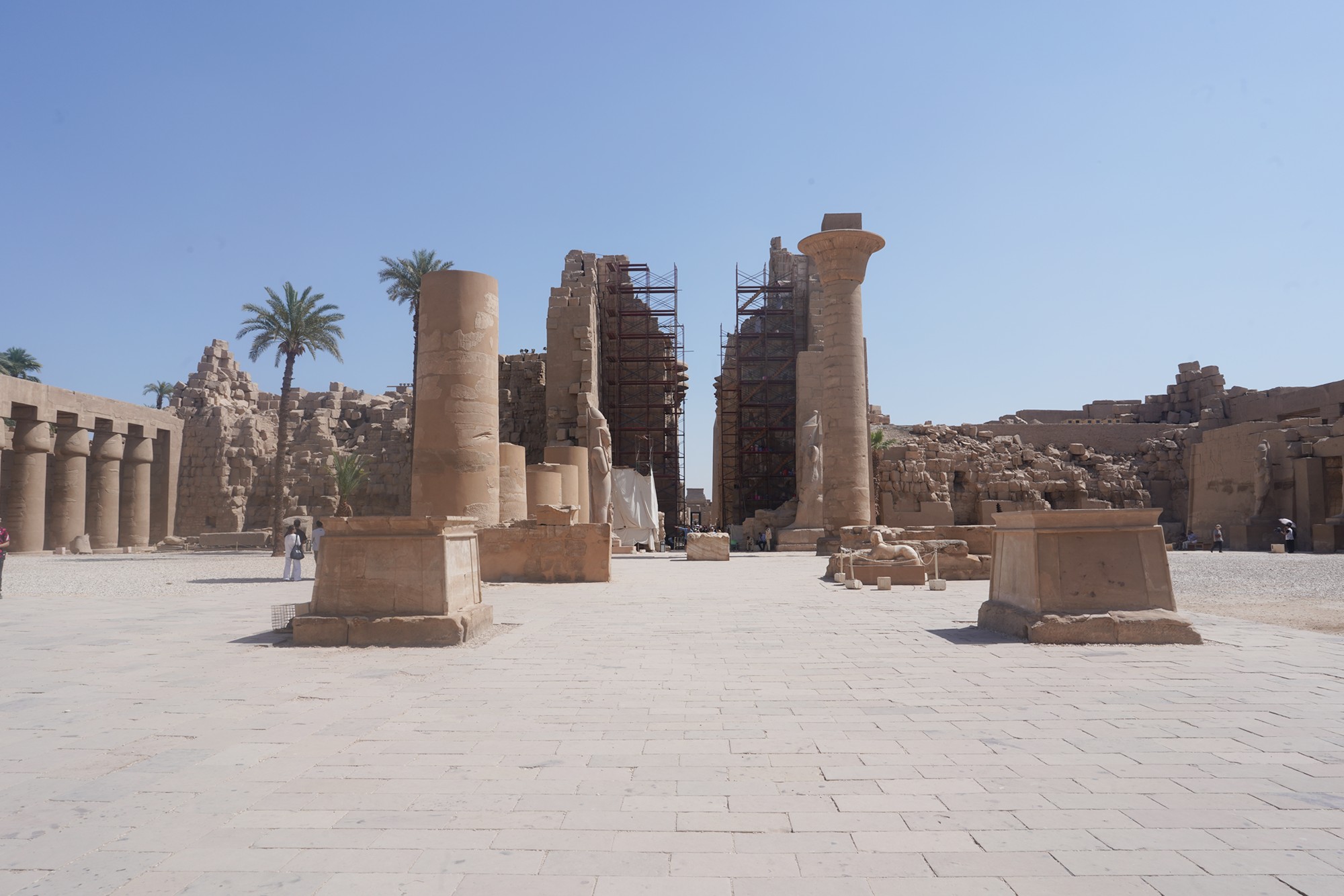


The building on the left side is the temple of Sethos II.
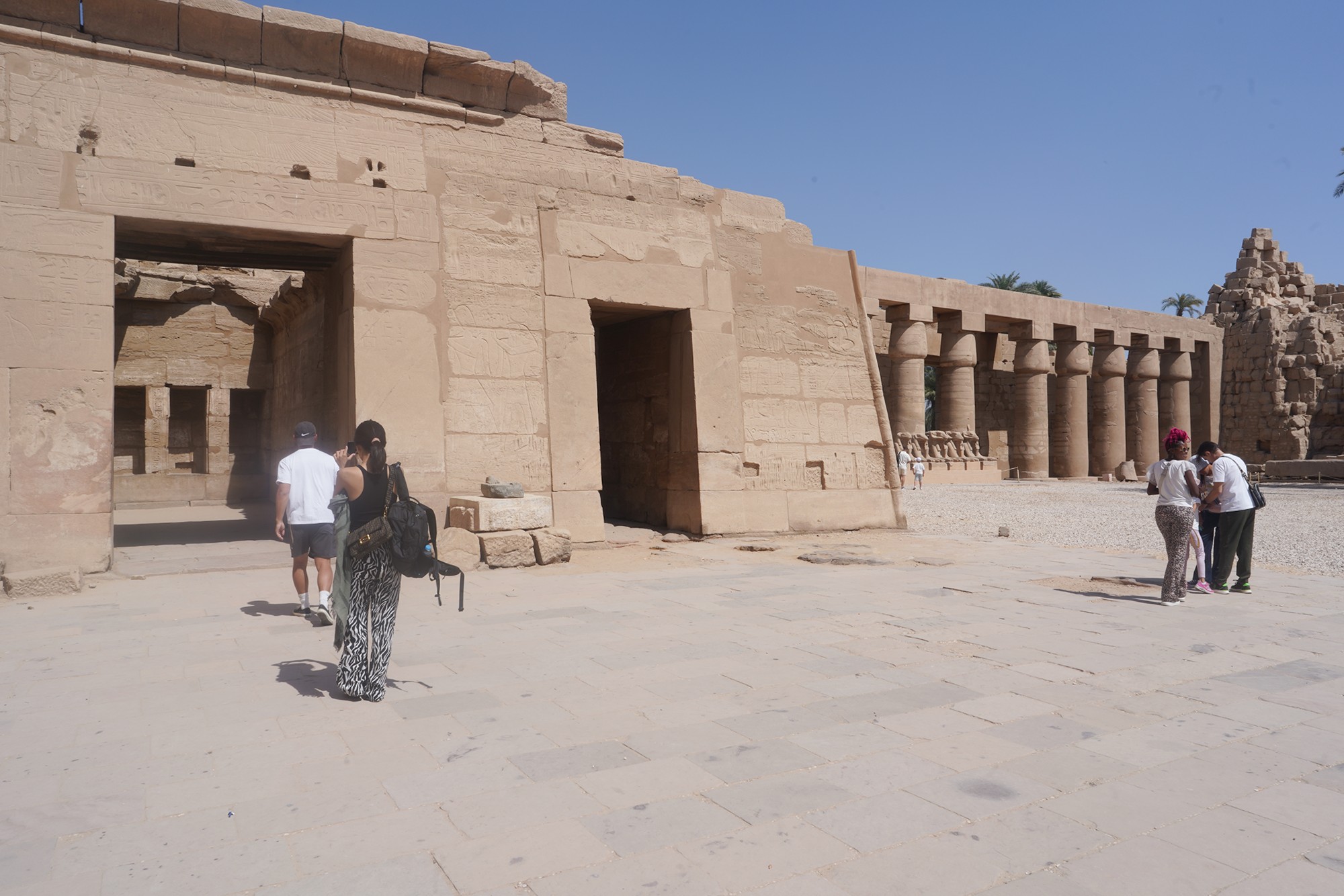
The temple of Sethos II



Came back to the courtyard



The right side of the courtyard

On the right side is a door that leads to the temple of Rameses III.

The temple of Rameses III



Came back to the inner courtyard from the room


Walked back to the outer courtyard


View of the central passage to the rear side of the temple


The central passage


The Great Hypostyle Hall is one of the most impressive architectural achievements of ancient Egypt. The hall covers an area of 54,000 square feet (5,000 square meters) and is supported by towering columns. The central nave is higher than the surrounding aisles, creating a sense of grandeur.












Came back to the central passage way

Turned around and looked back


Karnak is known for its obelisks, tall, tapering stone pillars with a pyramid-shaped top. There are several obelisks within the complex, some of which were erected by famous pharaohs like Hatshepsut and Thutmose III. The site also features numerous statues of pharaohs and deities.

This is the center of the temple, and the room far away is the sanctuary.

Here you can go left, right and straight
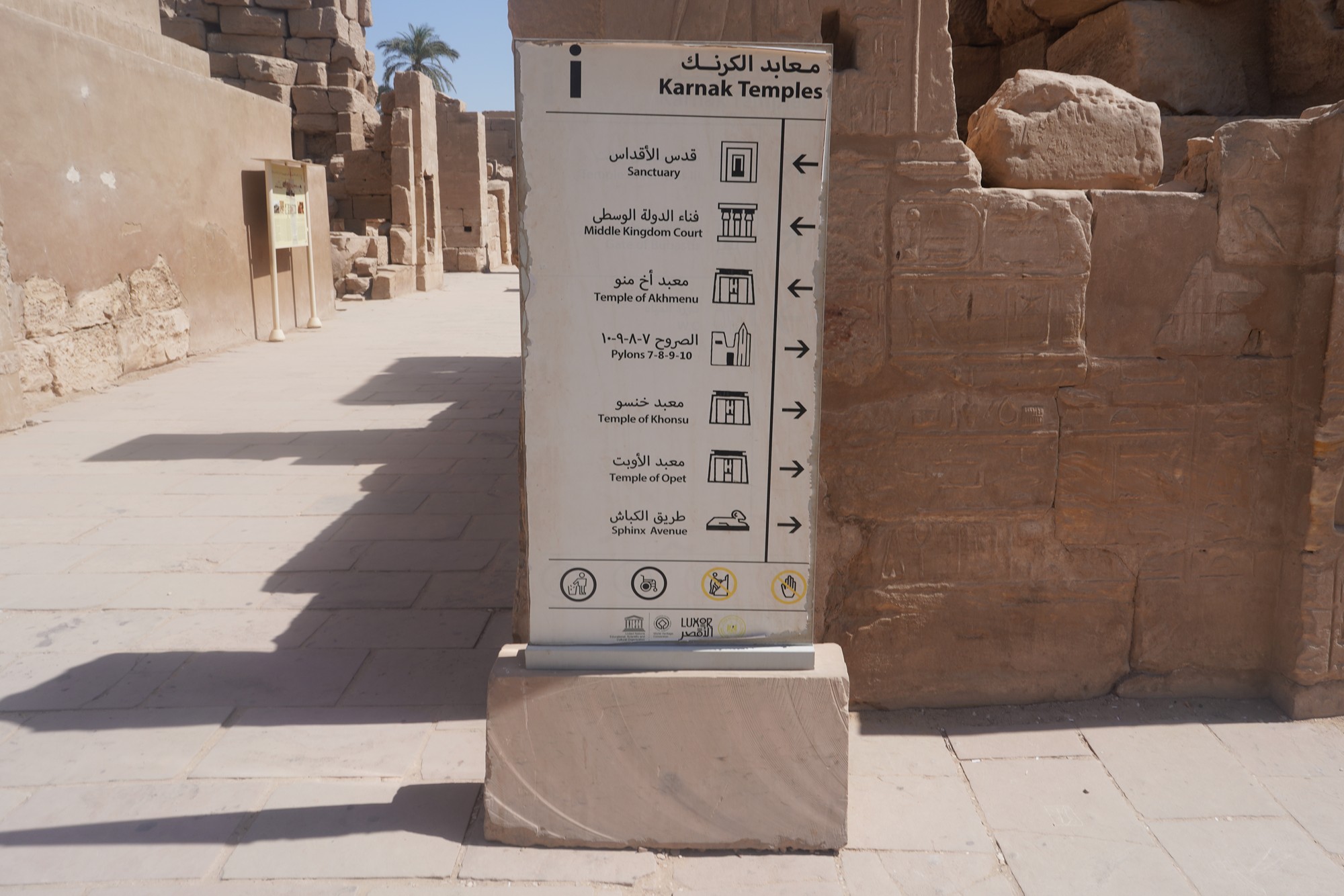
The view of the right side

The view of the left side

The back side

I walked to the left side first.


A building at the back of the sanctuary


The Middle Kingdom court

The Festival Hall of Thutmose III is situated at the end of the Middle Kingdom court, with its axis at right-angles to the main east–west axis of the temple. It was originally built to celebrate the jubilee (Heb-Sed) of the 18th Dynasty pharaoh Thutmose III, and later became used as part of the annual Opet Festival.

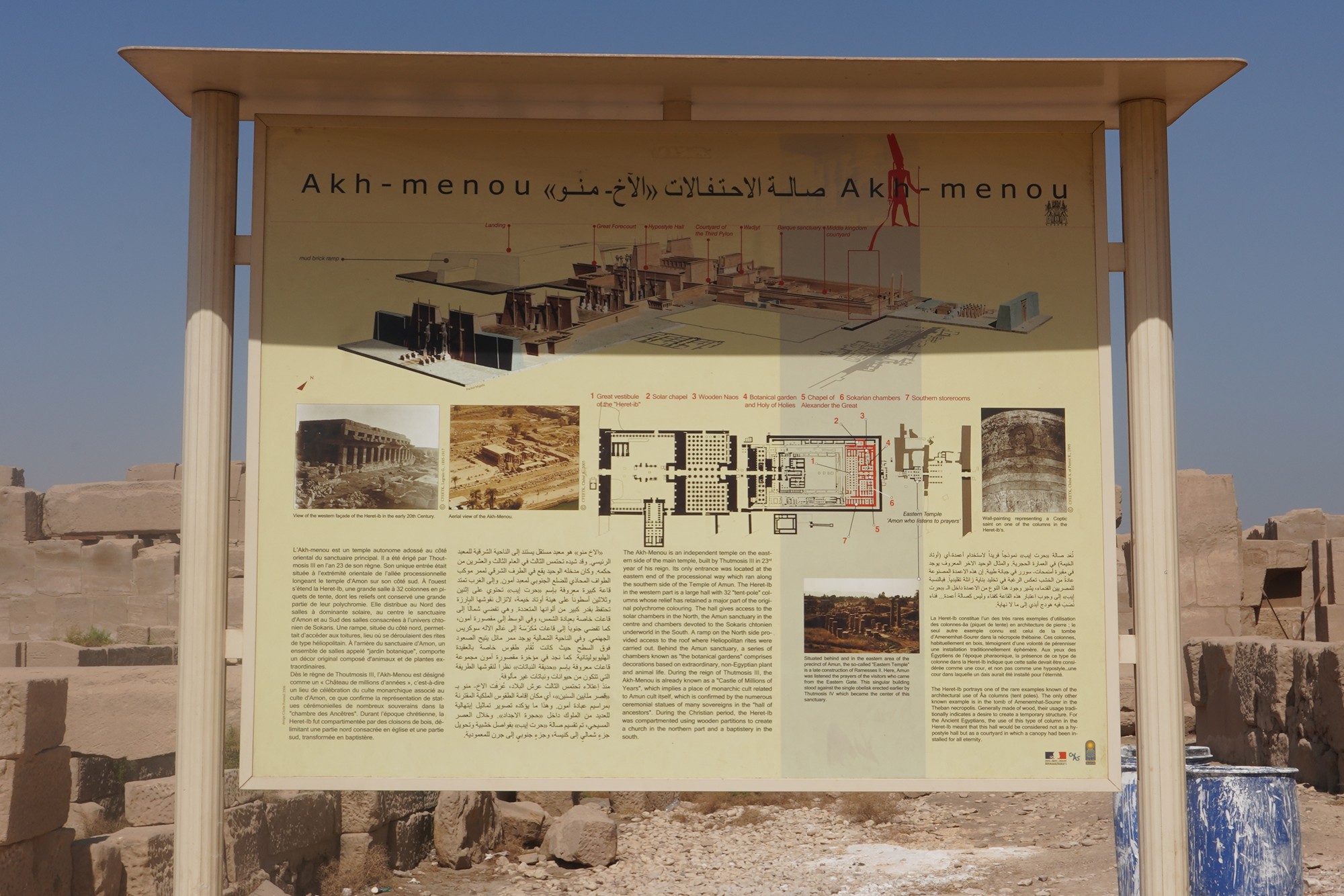

Turned around and looked back


The Festival Hall of Thutmose III is filled with columns.



More structures behind the Festival Hall of Thutmose III





This is the rear door of the temple indicates the end of the temple.

I turned around and

Walked toward the temple’s left

You can see the sacred lake and the series of the gates from the west.

Walked toward the center of the temple. The water on the left is the Sacred Lake, which was used for ritual purification and religious ceremonies.



I reached the courtyard with an obelisk with only its top in the center.

I kept walking to the center of the temple



Came back to the center

This time, I walked straight toward the sanctuary of Amun. The structure from here to the end is the temple of Amun.




Amun Temple’s Sanctuary

I turned around and looked back outside from the sanctuary of Amun


Walked back to the center of the temple

This time, I went to the right side, where there were a series of gates to the right side of the temple.


Walked through a door



Then through another door


Another door
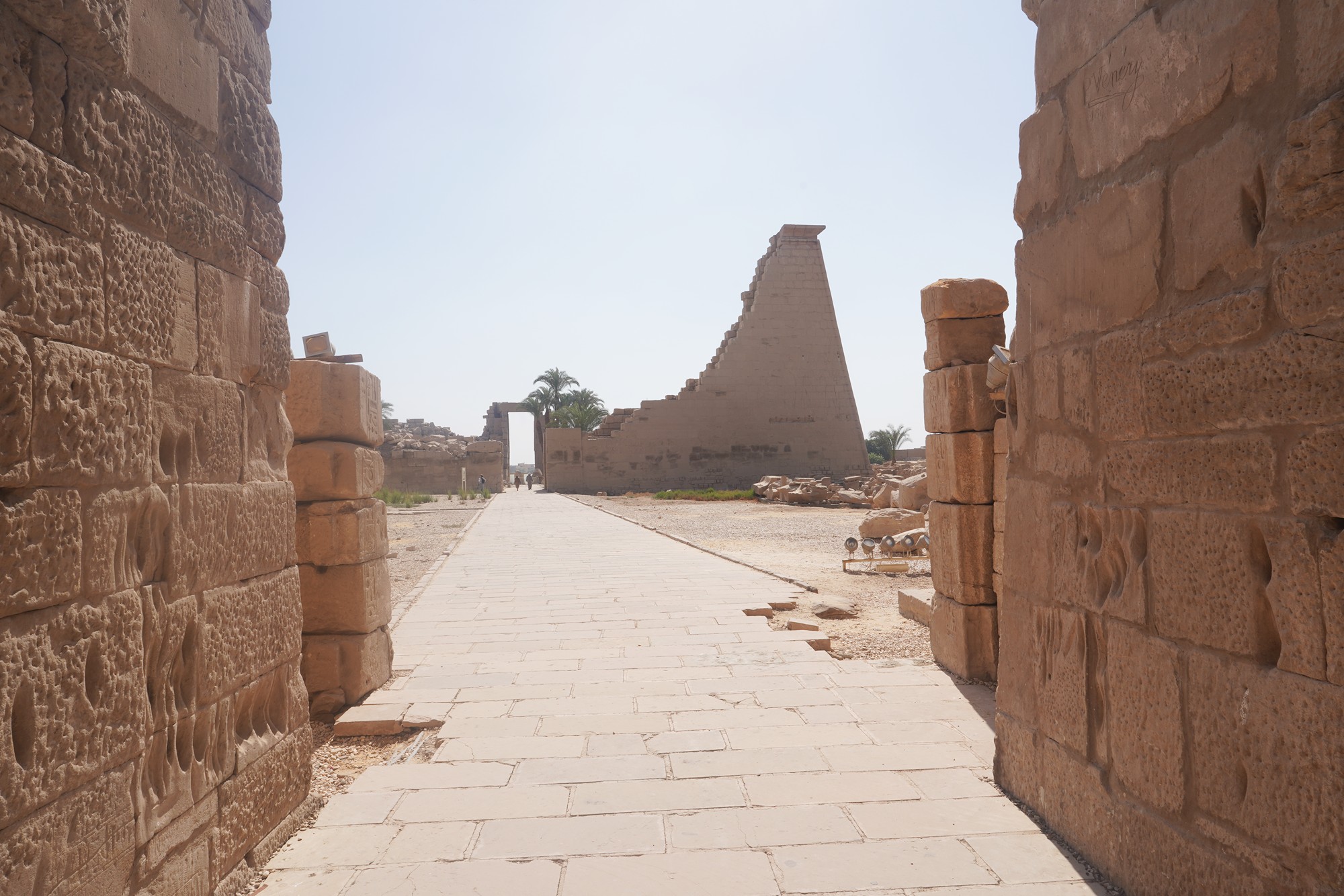

Another gate

And finally, the last door, which is locked for access.

On the front left side is the festival temple of Amenhotep II.

I turned around and walked back toward the center of the temple again.










I returned to the temple’s center, turned and walked toward the main gate.

Came back to the Great Hypostyle Hall





Exiting the main gate

and looked back

